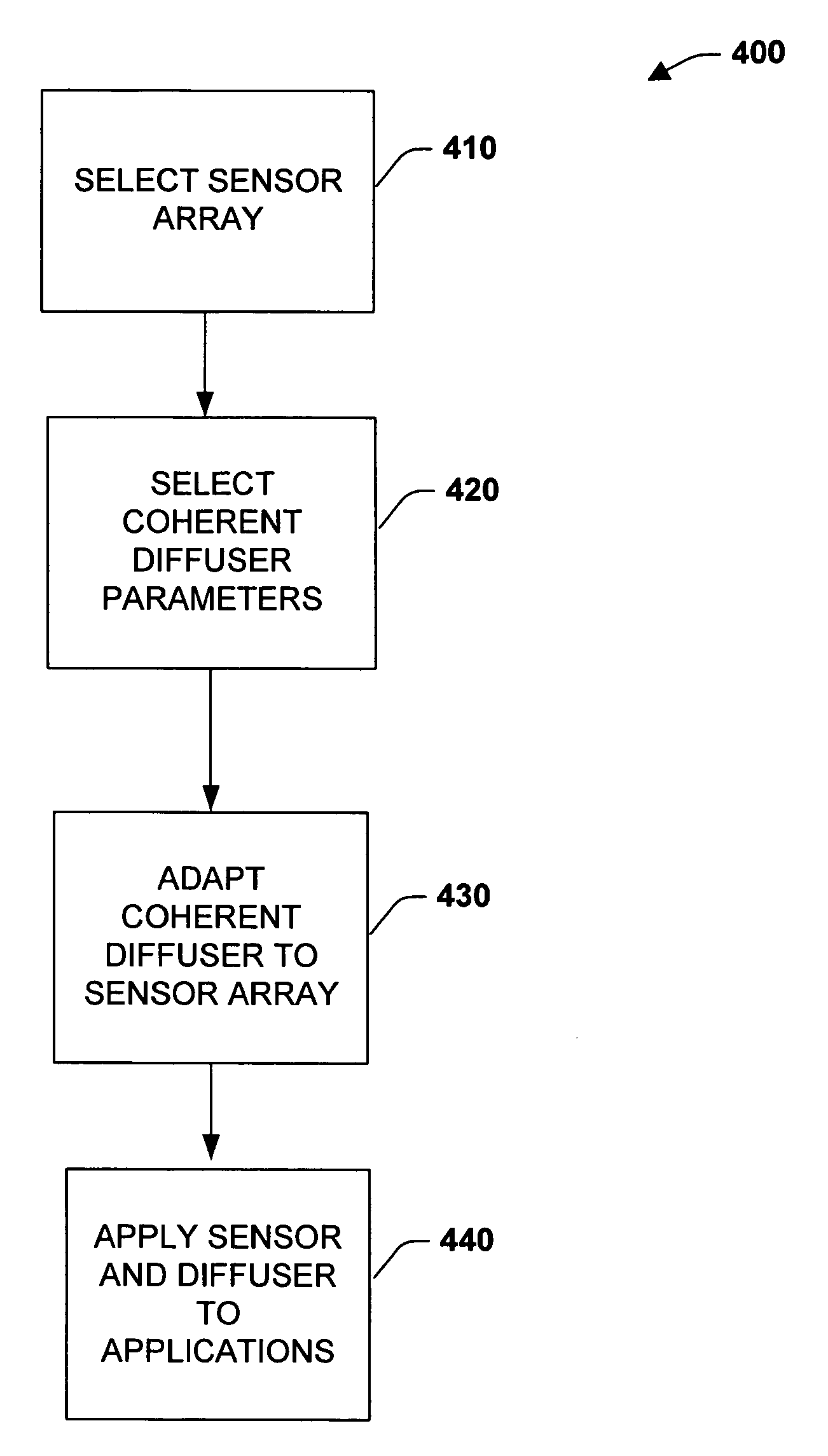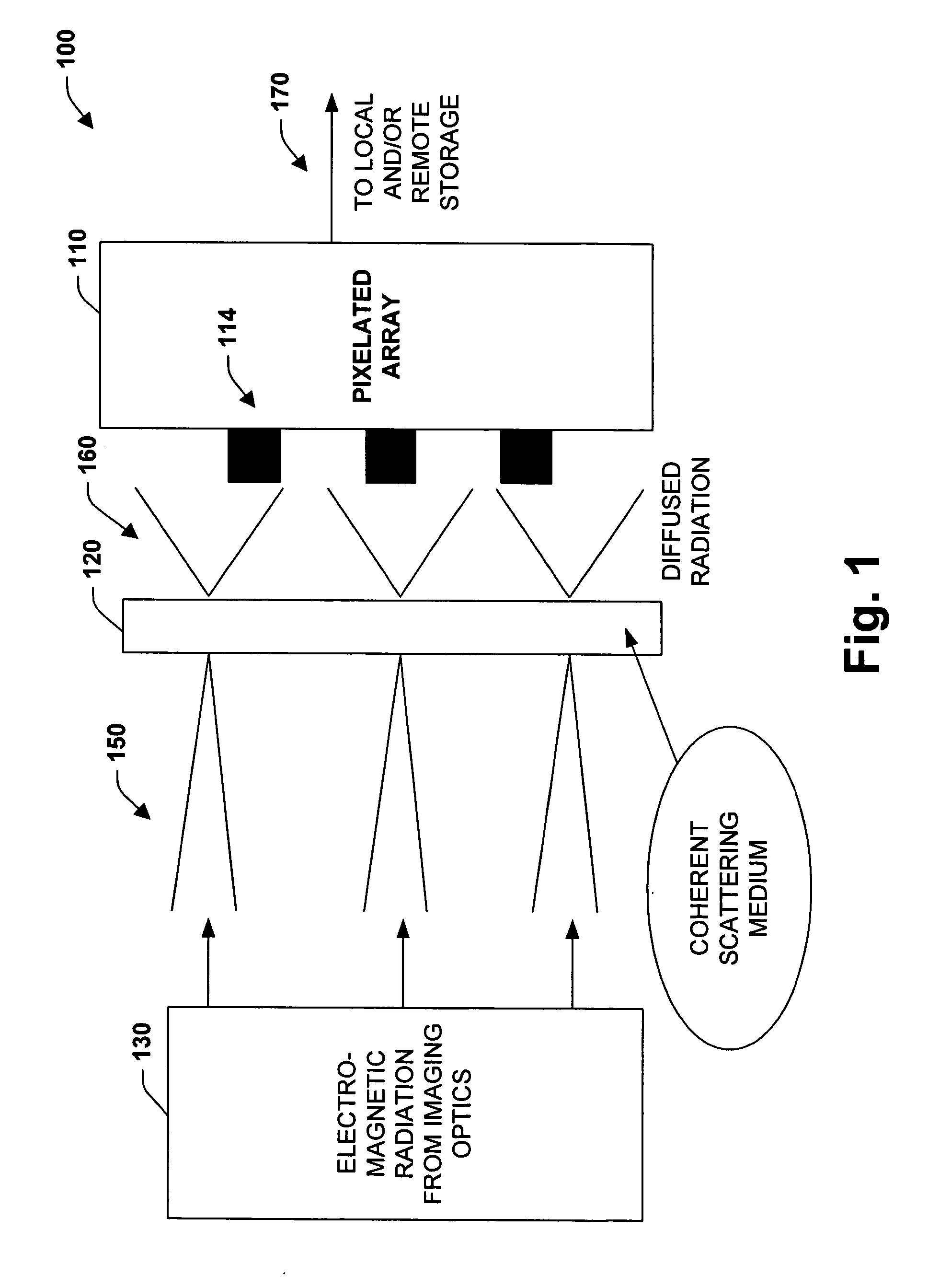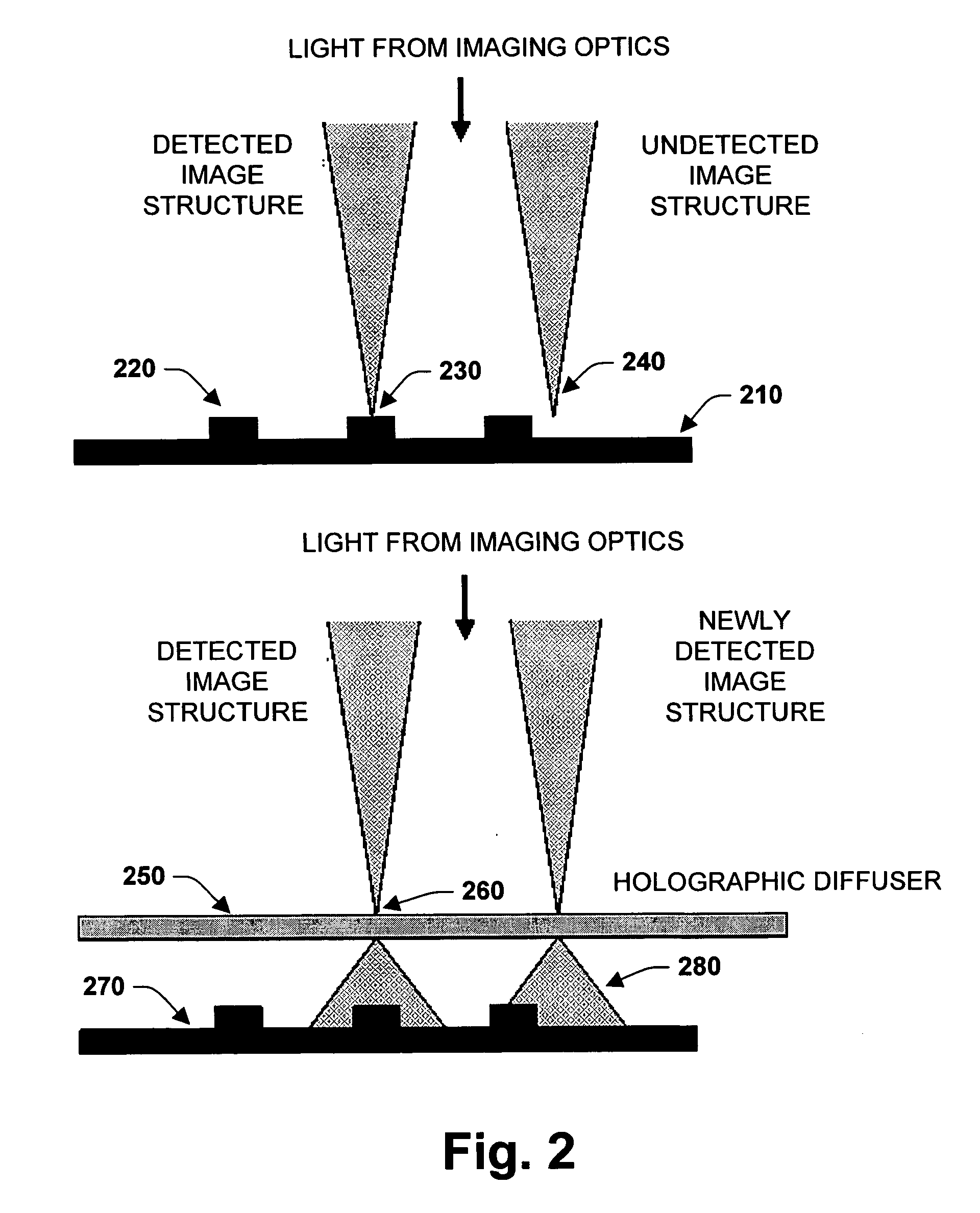Increasing fill-factor on pixelated sensors
a technology of pixelated sensors and fill-factors, applied in the field of digital imaging systems, can solve the problems of difficult to achieve 100% fill-factor, process generally does not allow a large fill-factor, and difficulty in precise manufacture, so as to improve the fill-factor performance, increase the fill-factor, and preserve the resolution
- Summary
- Abstract
- Description
- Claims
- Application Information
AI Technical Summary
Benefits of technology
Problems solved by technology
Method used
Image
Examples
Embodiment Construction
[0022] Disclosed are systems, devices, and methodologies that facilitate increasing the effective fill-factor of digital sensors. In general, fill-factor relates to the active area or photosensor region of the sensor with respect to the deadzone / inactive area or space between pixels on the array. By increasing the effective fill-factor, transmission of increased / maximum amount of optical information to the active portions of the sensor is achieved while mitigating information loss between pixels on the sensor. In one aspect, an image detector system is provided. The system contains a coherent scattering medium and a pixelated sensor that is responsive to electromagnetic radiation such as visible light, for example. The coherent scattering medium diffuses the electromagnetic radiation with respect to the pixelated sensor in order to increase the effective fill-factor of the sensor. In one embodiment, the sensor system does not contain conventional lenslets, conventionally used to add...
PUM
 Login to View More
Login to View More Abstract
Description
Claims
Application Information
 Login to View More
Login to View More - R&D
- Intellectual Property
- Life Sciences
- Materials
- Tech Scout
- Unparalleled Data Quality
- Higher Quality Content
- 60% Fewer Hallucinations
Browse by: Latest US Patents, China's latest patents, Technical Efficacy Thesaurus, Application Domain, Technology Topic, Popular Technical Reports.
© 2025 PatSnap. All rights reserved.Legal|Privacy policy|Modern Slavery Act Transparency Statement|Sitemap|About US| Contact US: help@patsnap.com



